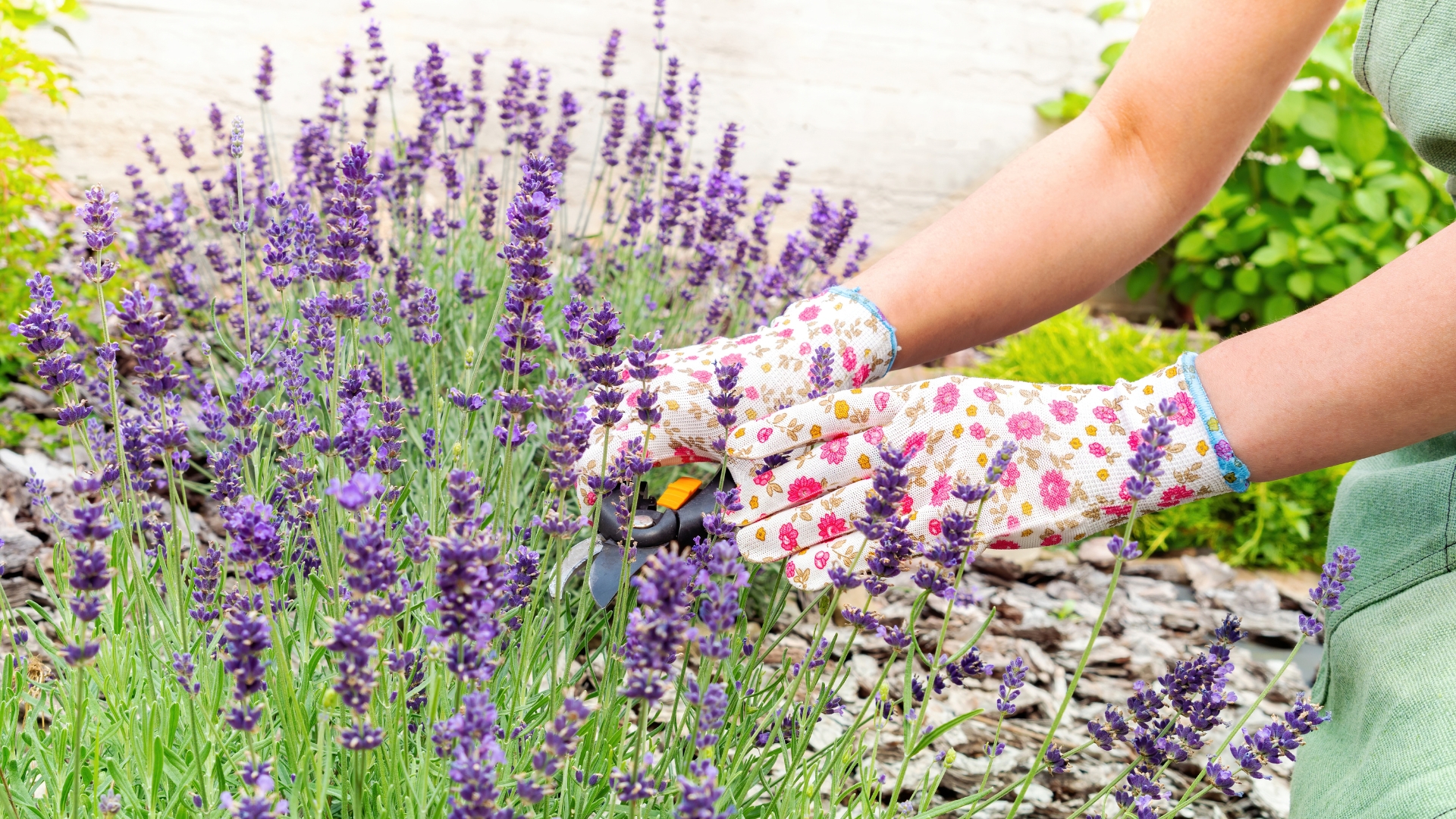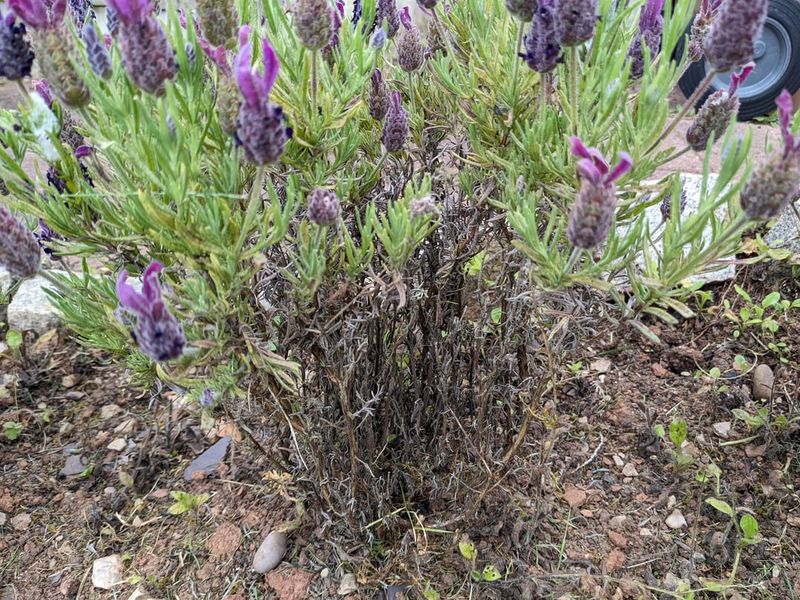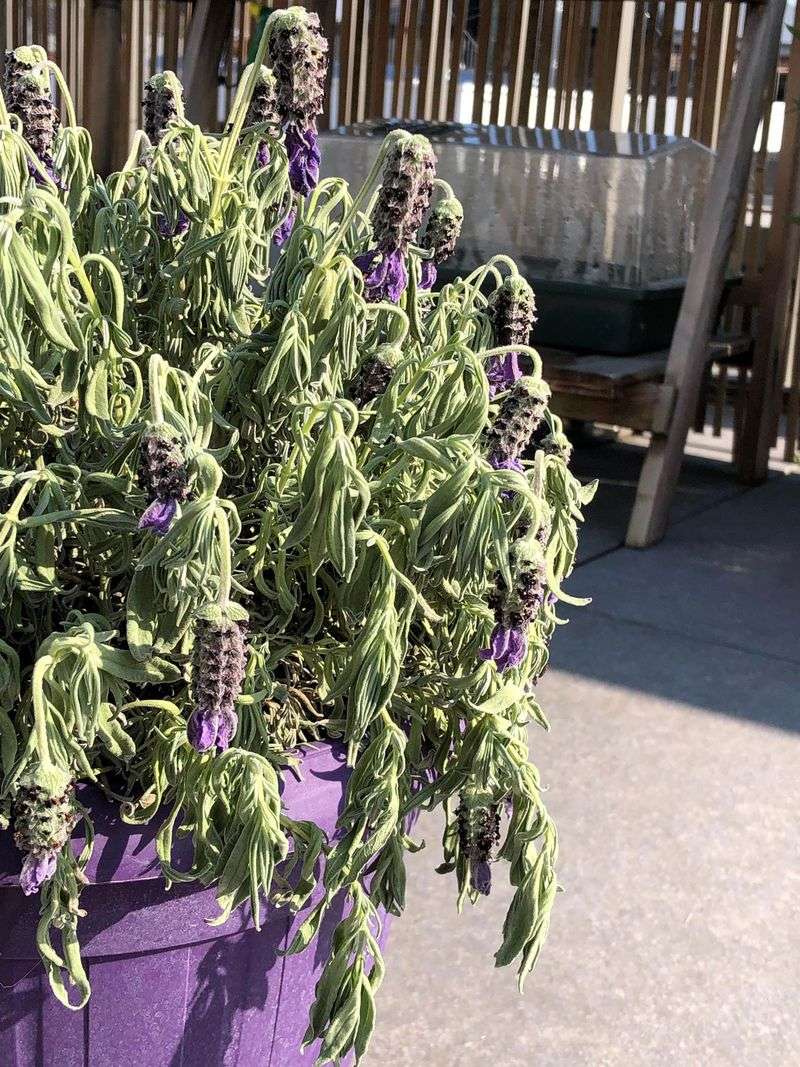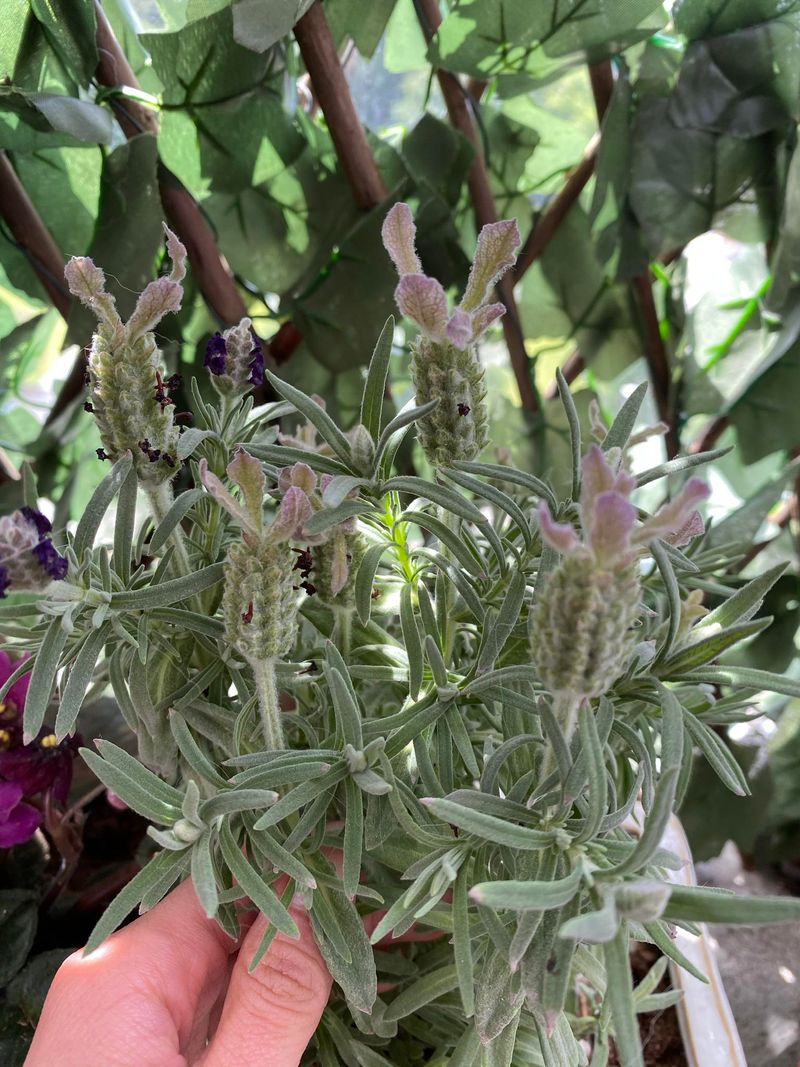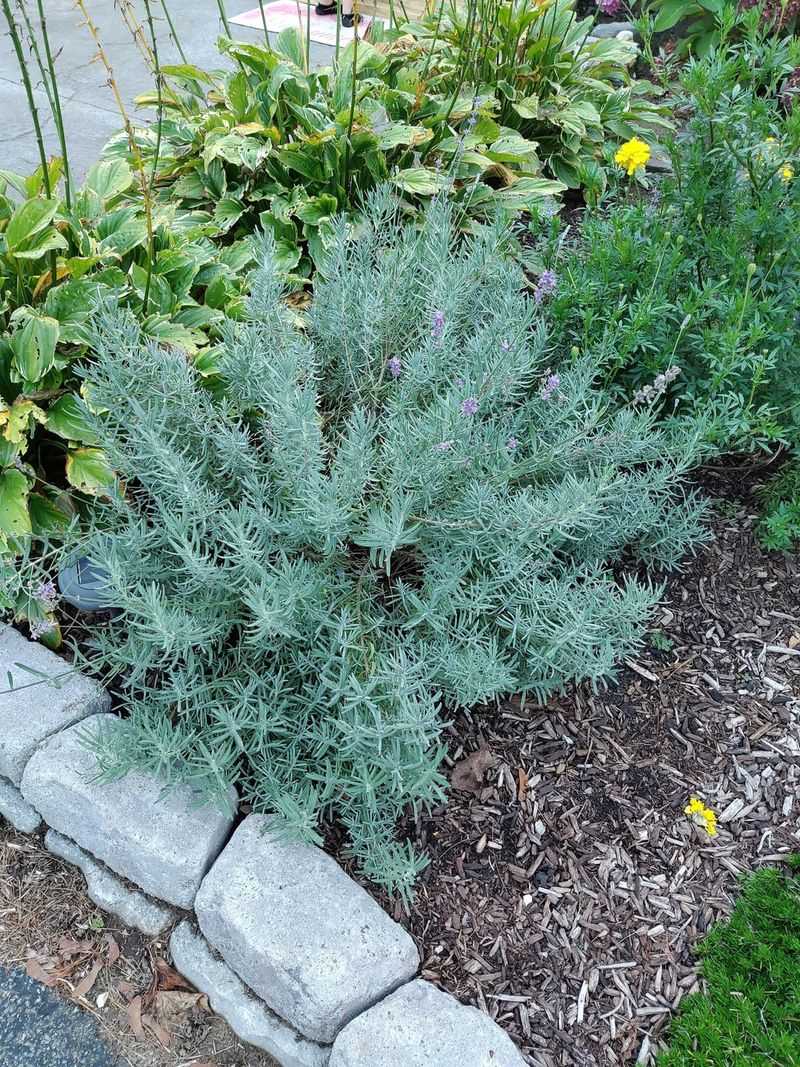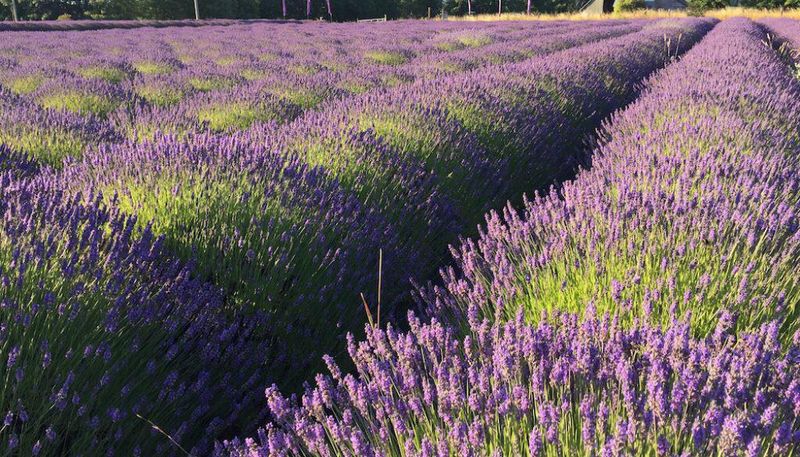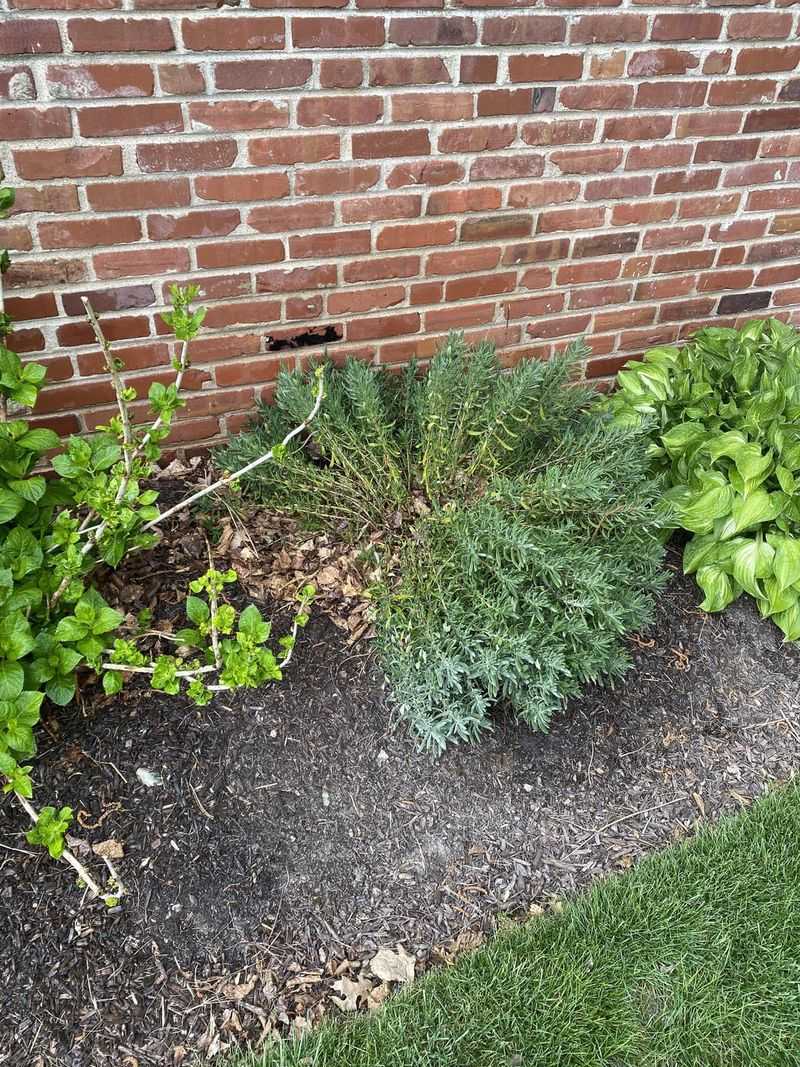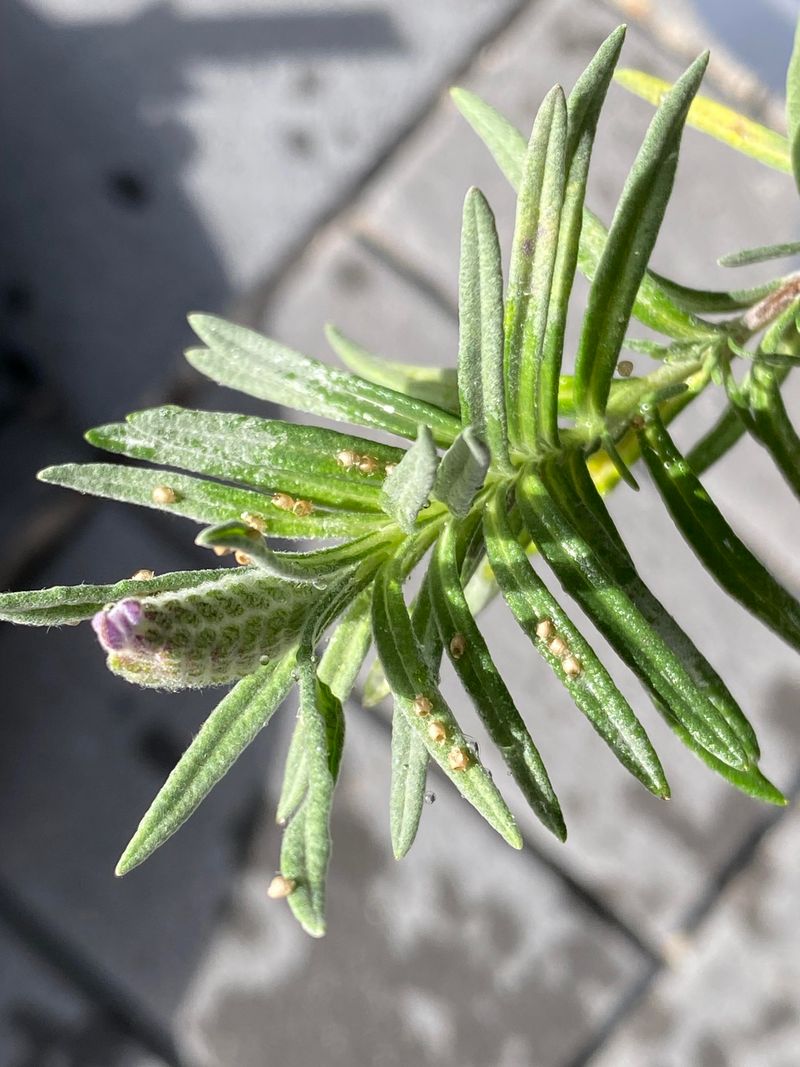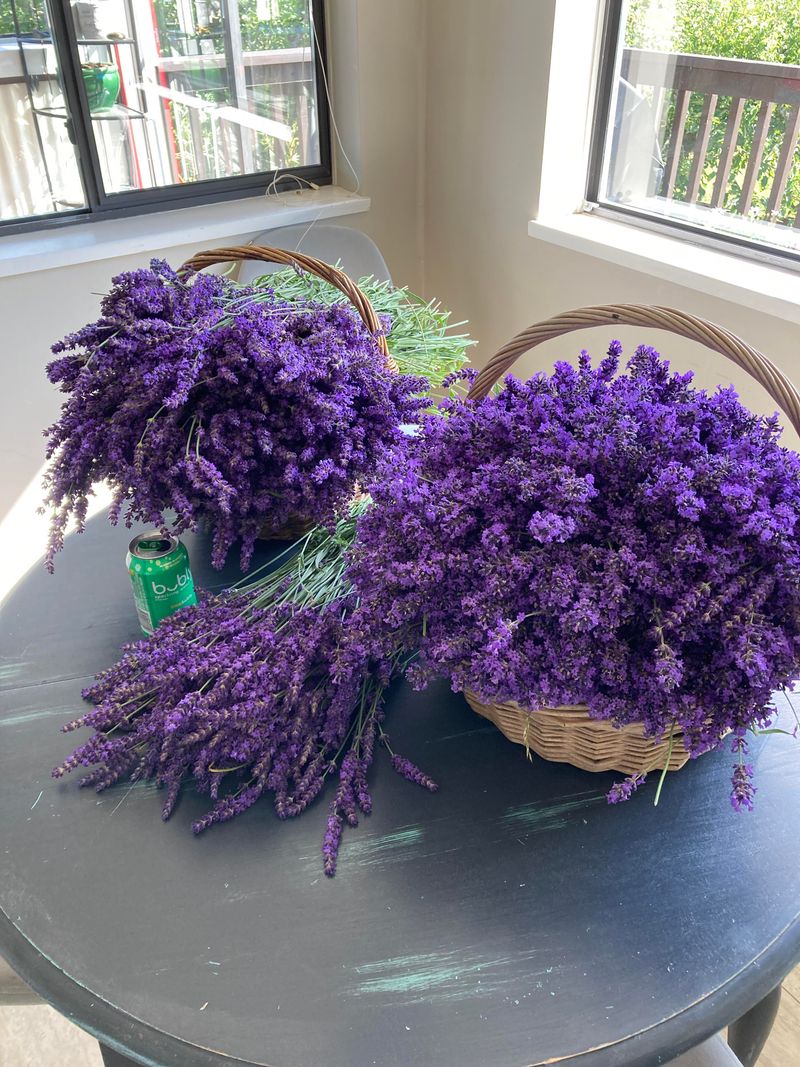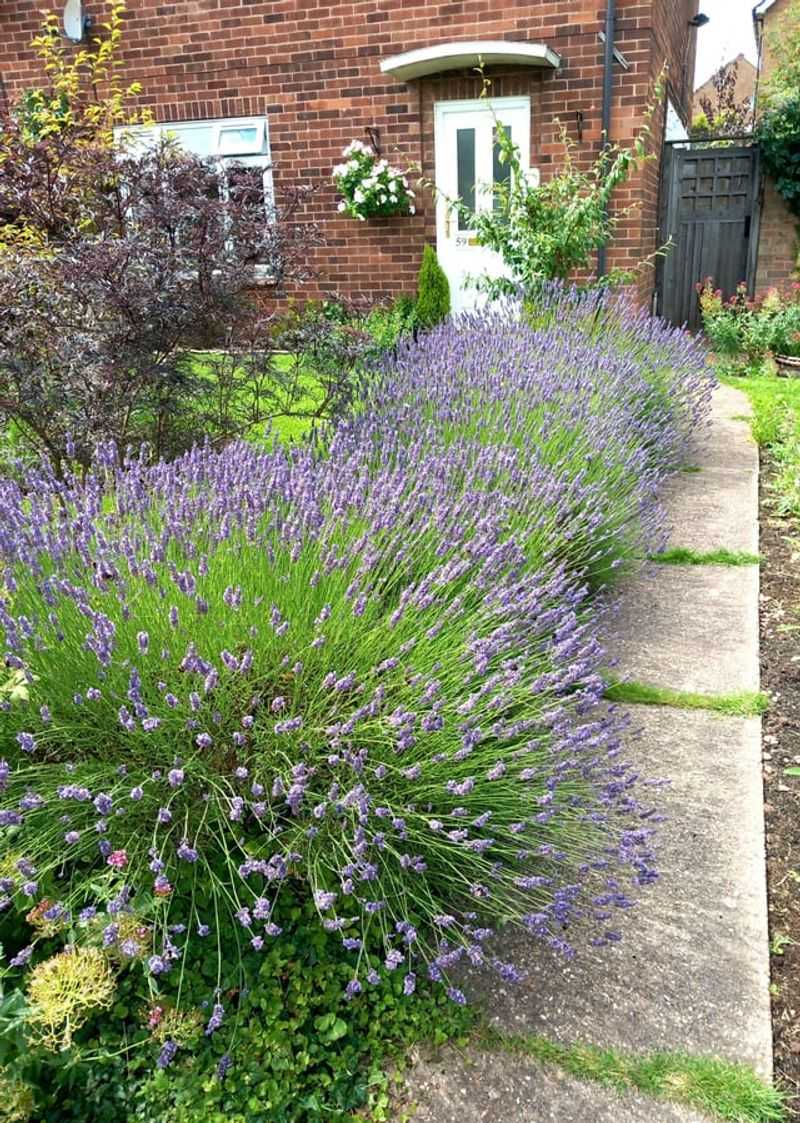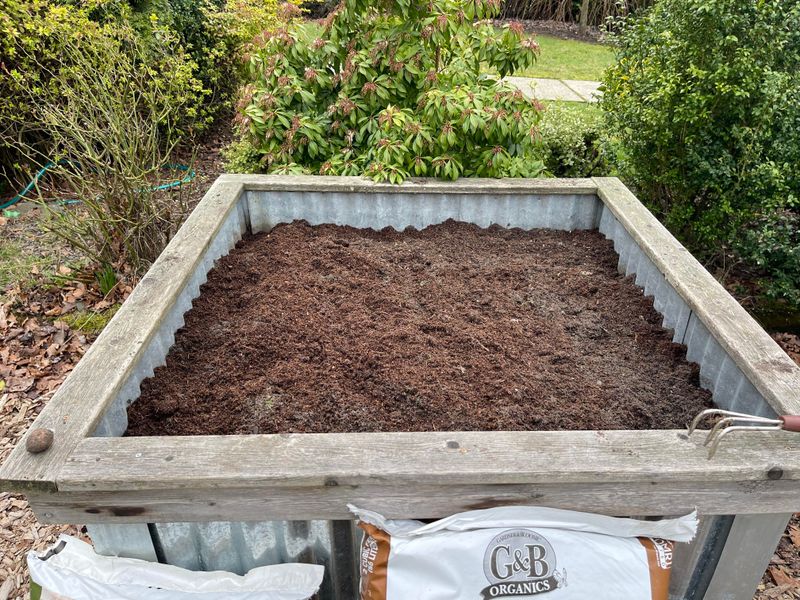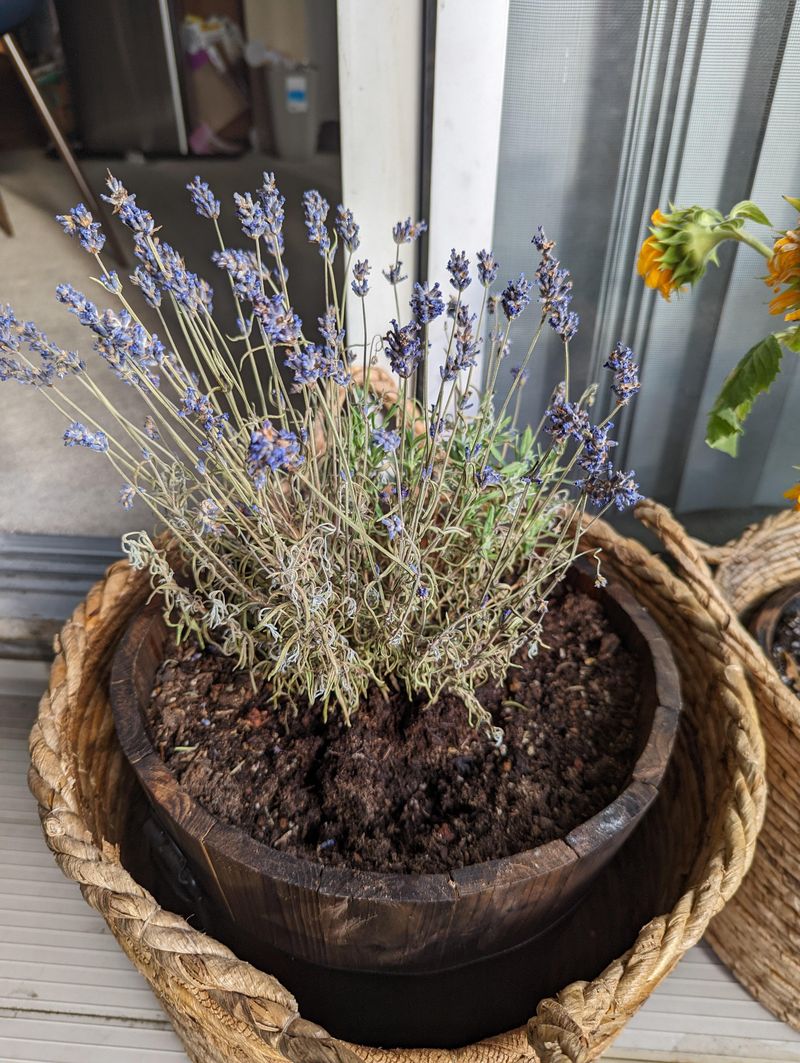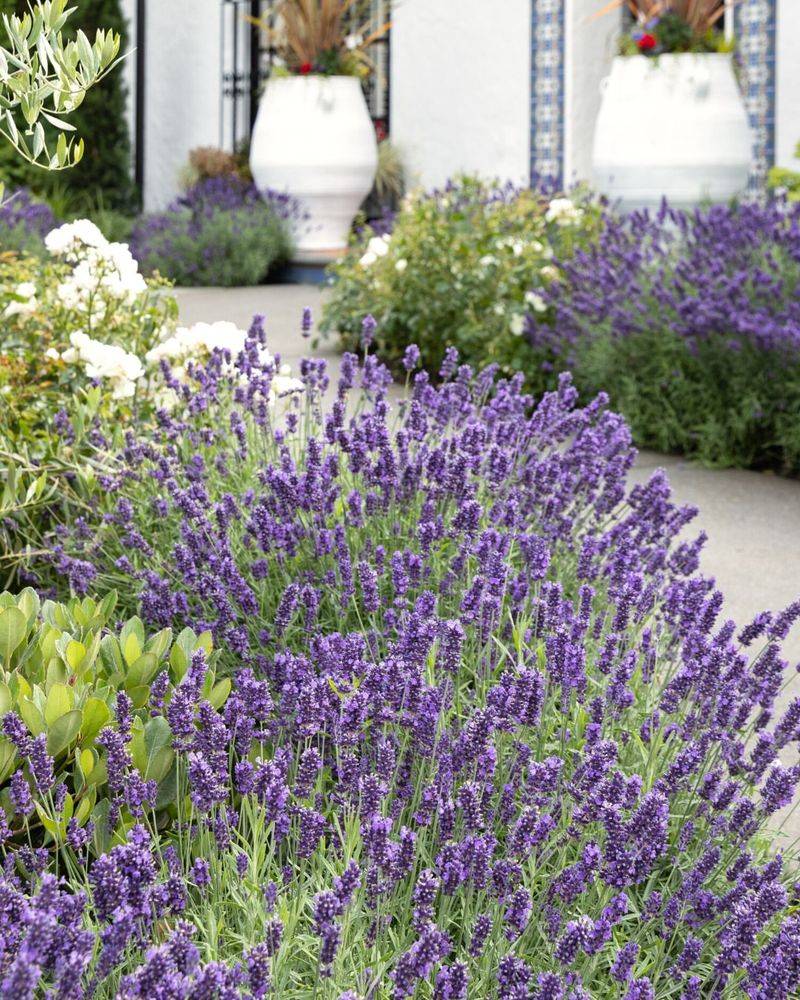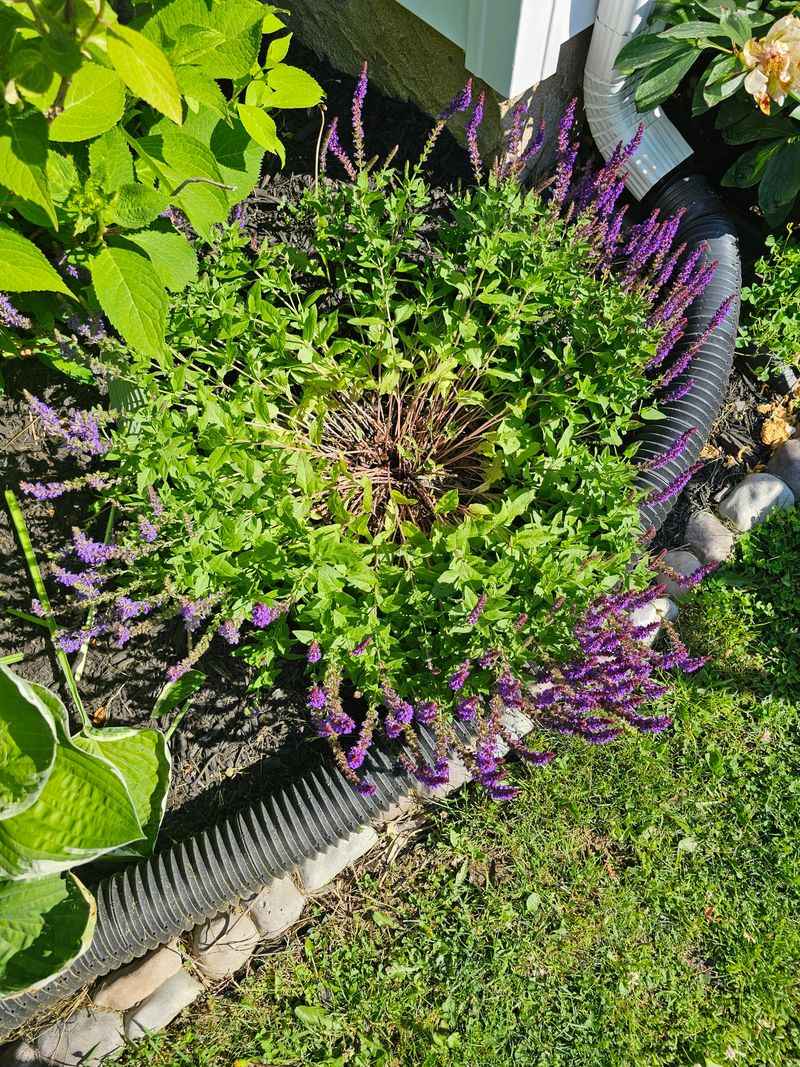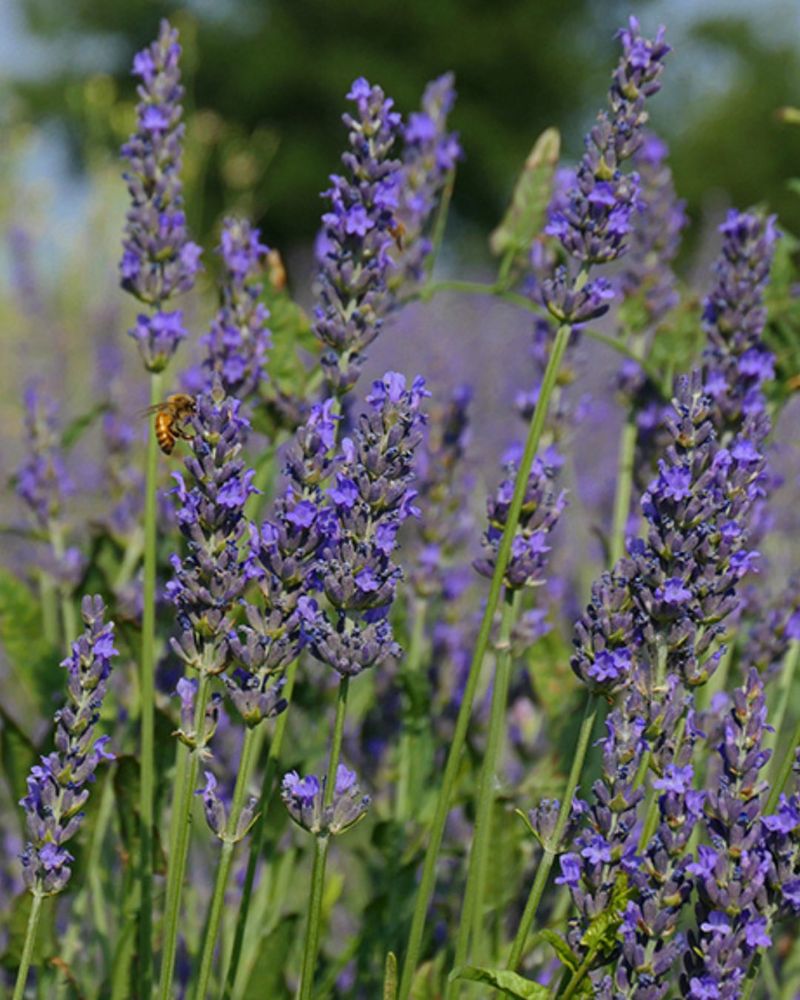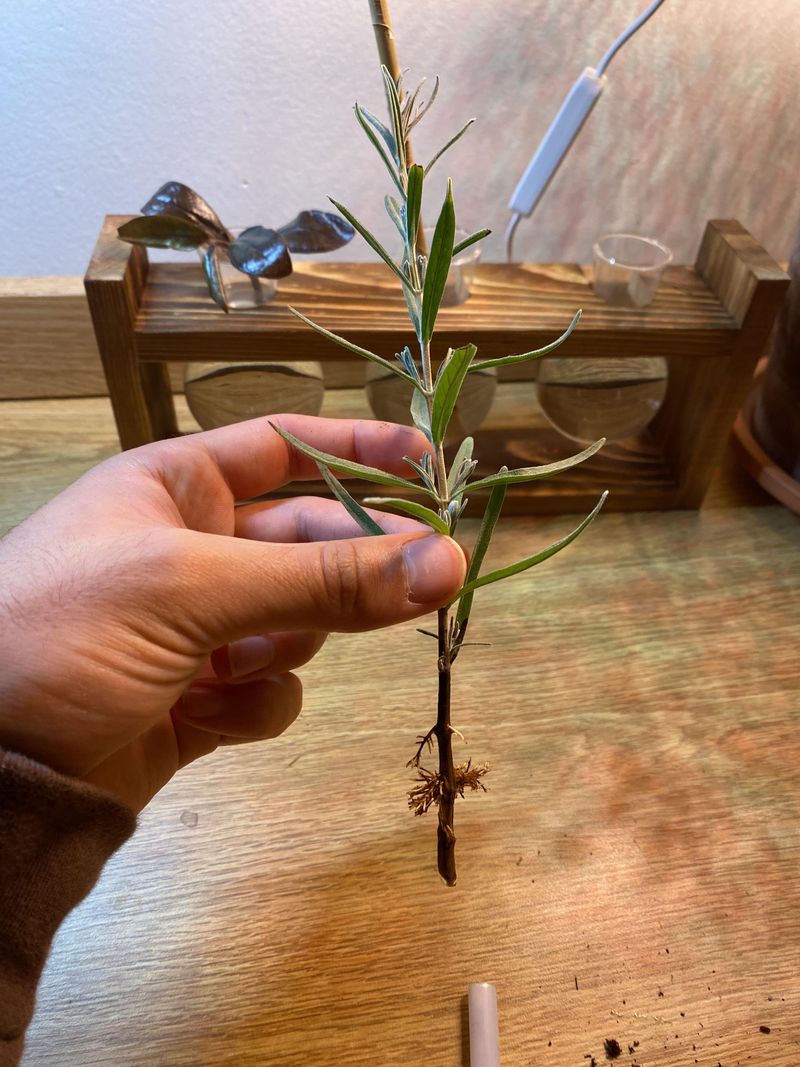Lavender might smell like a dream, but if you skip a few key summer tasks, it can turn into a scraggly mess before you know it. I’ve learned that a little care now keeps those stems soft, full, and blooming beautifully.
These 15 simple tasks are all about keeping things tidy, healthy, and gorgeous. Think of it as a seasonal spa day for your lavender—it totally deserves it.
Let’s keep those woody stems away and the flowers coming strong!
1. Prune After First Bloom
Summer pruning keeps lavender compact and prevents those dreaded woody stems. Cut back about one-third of the plant after the first flowering flush, making sure to leave some green growth intact.
Never cut into the woody base or your plant might not recover. This early-season haircut encourages a second round of blooms and maintains the plant’s attractive shape for years.
2. Water Deeply But Infrequently
Lavender hates wet feet! Water established plants only when the soil feels completely dry several inches down. A good soaking once every two weeks is better than frequent light sprinklings.
Morning watering allows foliage to dry before evening, preventing fungal issues. Remember that overwatering is the quickest way to kill lavender, as soggy conditions lead to root rot and woody stems.
3. Remove Spent Blooms
Deadheading encourages lavender to produce more flowers throughout summer. Snip off faded blooms just below the flower head, being careful not to cut into woody parts of the stem.
Regular deadheading prevents energy waste on seed production. The plant will redirect its resources toward new growth and flower production instead of developing woody stems as it tries to set seed.
4. Apply Mulch Carefully
Lavender prefers breathing room around its crown. Apply a thin layer of gravel or crushed shell mulch, keeping it at least two inches away from the plant’s base to prevent moisture buildup.
Avoid organic mulches like wood chips or bark that retain too much moisture. The right mulching technique suppresses weeds while allowing proper airflow, preventing the humid conditions that lead to fungal problems and woody stems.
5. Check Soil Drainage
Summer is perfect for assessing how well your lavender’s soil drains after watering or rain. Water should disappear within an hour, never pooling around plants.
If drainage is poor, consider raising the bed or adding coarse sand and gravel to the soil. Proper drainage prevents root rot and stress that can cause lavender to develop woody stems as a survival response.
6. Divide Overcrowded Plants
Early summer is ideal for dividing three-year-old lavender plants that haven’t yet developed extensive woody stems. Carefully dig up the plant, then separate it into sections, each with roots attached.
Replant immediately, watering well for the first week. Division rejuvenates older plants by encouraging fresh growth from the roots, preventing the woody stem development that occurs when plants become too crowded.
7. Monitor For Pests
Summer brings increased insect activity that can stress lavender plants. Check regularly for spittlebugs, aphids, and whiteflies, especially in humid regions.
A strong blast of water often dislodges most pests. Healthy, unstressed plants naturally resist pests better, while damaged plants develop woody stems as a defense mechanism. Early intervention prevents the cycle of damage and woodiness.
8. Harvest Lavender Correctly
Mid-summer harvesting should follow specific rules to maintain plant health. Cut stems when buds are just beginning to open but before flowers fully bloom for maximum oil content.
Make cuts just above a leaf node, never into brown woody areas. Proper harvesting techniques actually function as a form of beneficial pruning, encouraging bushy growth and preventing the plant from becoming leggy and woody.
9. Provide Adequate Spacing
Summer growth can cause lavender plants to crowd each other. Maintain at least 2-3 feet between plants to ensure good air circulation and prevent fungal issues.
If plants are too close, consider removing every other one. Proper spacing reduces humidity around plants and allows each one to develop fully without competition, preventing the stress that can trigger woody stem formation.
10. Refresh Garden Soil
Summer is perfect for refreshing the soil around established lavender. Gently scratch a thin layer of compost or specialized lavender fertilizer into the soil surface, being careful not to disturb roots.
Avoid nitrogen-rich fertilizers that promote leafy growth at the expense of flowers. The right soil amendments encourage balanced growth and flowering, preventing the stress conditions that lead to woody stems.
11. Protect From Excessive Heat
During intense summer heat waves, lavender may need temporary afternoon shade. Use breathable row covers or shade cloth to protect plants during the hottest part of the day.
Remove protection when temperatures moderate. While lavender loves sun, extreme heat can stress plants and trigger survival mechanisms like developing woody stems. Temporary protection maintains plant health during challenging conditions.
12. Manage Competing Weeds
Summer weeds compete with lavender for water and nutrients. Pull weeds carefully by hand rather than using hoes that might damage shallow lavender roots.
Create a weed-free zone at least one foot around each plant. Eliminating competition reduces stress on your lavender, preventing the plant from diverting energy to survival mechanisms like developing woody stems instead of producing flowers.
13. Address Leaning Plants
Heavy summer blooms can cause lavender stems to flop over. Insert small bamboo stakes around (not through) the plant and loosely tie stems with garden twine to provide support.
Staking prevents stems from breaking and soil contact that leads to rot. Supporting leaning plants maintains their shape and health, preventing the stress that can accelerate woody stem development at the plant’s base.
14. Document Plant Performance
Summer is ideal for evaluating which lavender varieties perform best in your garden. Take photos and notes about flowering time, drought tolerance, and overall appearance.
This information helps with future planning and replacements. Identifying varieties that naturally resist woody stem development in your specific climate allows you to focus your garden on the most suitable lavender types for long-term success.
15. Plan For Replacement
Even with perfect care, lavender plants eventually become woody and less productive. Summer is the time to propagate new plants from stem cuttings taken from this year’s new growth.
Root the cuttings in sandy soil to have replacement plants ready. This rotation system ensures you always have young, vigorous lavender plants ready to replace older, woody specimens that have passed their prime.

